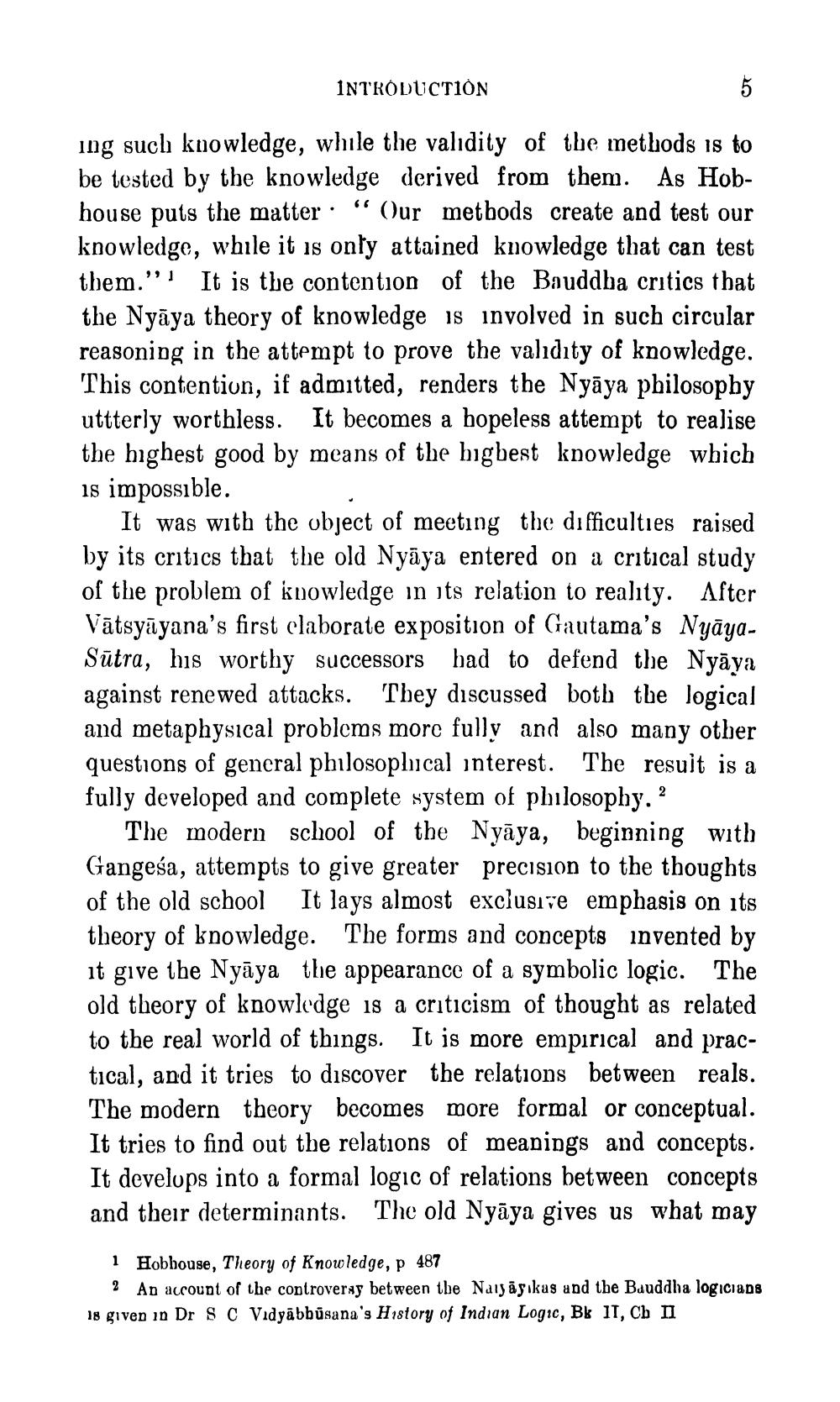________________
INTRODUCTION
ing such knowledge, while the validity of the methods is to be tested by the knowledge derived from them. As Hobhouse puts the matter : “ Our methods create and test our knowledge, while it is only attained knowledge that can test them."! It is the contention of the Bauddha critics that the Nyāya theory of knowledge is involved in such circular reasoning in the attempt to prove the validity of knowledge. This contention, if admitted, renders the Nyāya pbilosophy uttterly worthless. It becomes a hopeless attempt to realise the highest good by means of the higbest knowledge which is impossible.
It was with the object of meeting the difficulties raised by its critics that the old Nyāya entered on a critical study of the problem of knowledge in its relation to reality. After Vātsyāyana's first elaborate exposition of Gautama's NyāyaSūtra, his worthy successors had to defend the Nyāya against renewed attacks. They discussed both the logical and metaphysical problems more fully and also many other questions of general philosoplıcal interest. The resuit is a fully developed and complete system of philosophy. ?
The modern school of the Nyāya, beginning with Gangesa, attempts to give greater precision to the thoughts of the old school It lays almost exclusive emphasis on its theory of knowledge. The forms and concepts invented by it give the Nyāya the appearance of a symbolic logic. The old theory of knowledge is a criticism of thought as related to the real world of things. It is more empirical and practical, and it tries to discover the relations between reals. The modern theory becomes more formal or conceptual. It tries to find out the relations of meanings and concepts. It develops into a formal logic of relations between concepts and their determinants. The old Nyāya gives us what may
1 Hobhouse, Theory of Knowledge, p 487
2 An account of the controversy between the Naisās kus and the Bauddha logicians 18 given in Dr SC Vidyābbūsana's History of Indian Logic, Bk 11, Cb II




